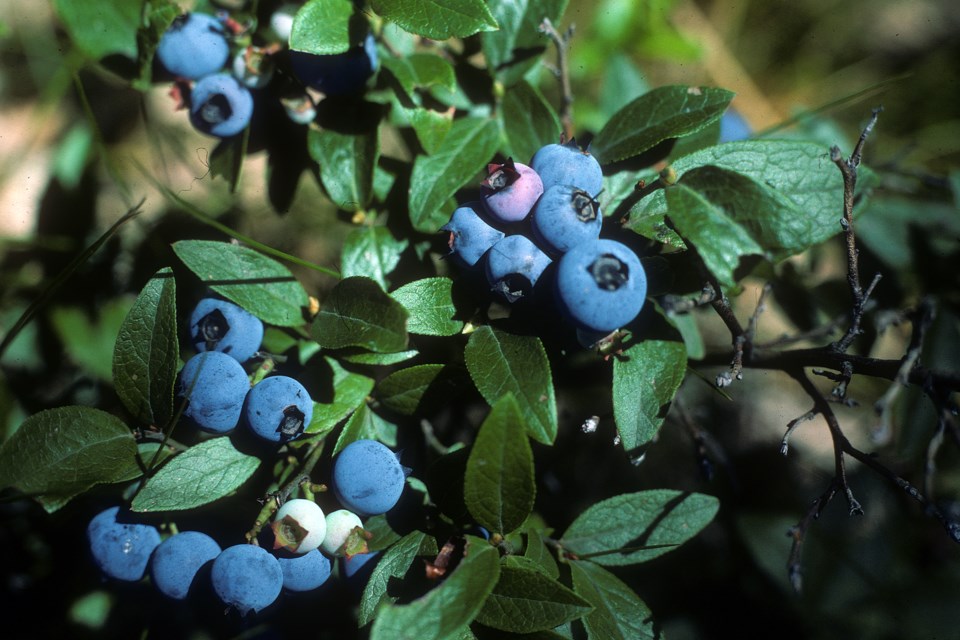In between rainy days I try to get out on the land as much as possible. By ‘on the land’ I mean those remote, hidden, quiet, botanically-rich areas devoid of other humans. Areas which, by the way, are getting harder to come by. So I regale when I am fortunate to be surrounded by natural beauty and solitude.
As July moves steadily towards August, the quiet rocklands of central Ontario are hitting their stride in regards to treasures to be found: unusual orchids are blooming, unique wildflowers are peeking out from shady areas, lichens of all shapes and sizes are to be found, hardy mushrooms are scattered on the oak forest floor, and the summer harvest is in full swing.
Summer harvest includes the delicious and nutritious berries of the region: blueberries, raspberries, black-caps and even the introduced thimbleberries are all ripe, lush and just hanging there, waiting there for some critter or another to come along and eat them.
The list of birds and mammals that chow down on these wild fruits is as long as the species who live there ... just about everybody!
And ‘everybody’ includes us humans. It’s like nature has thrown open the doors and said come on in for some free food.
Which leads us to discuss this notion of foraging: us folks versus the wildlife. When is it polite for us to have a handful of trailside nibbles and when do we back off and let the natural order of things proceed?
There has always been that rule of thirds: one-third left to reproduce, one-third left for wildlife to eat and one-third for the taking. Sounds fair when said quickly, but the third for wildlife includes multiple species while our third is for one species only, and a dominant one at that.
When picking up a snack from the wild side, you have to place yourself in the situation, from a wide view: how abundant are the berries right here? How many berry-eating wildlife species live right here? How many berry-thieving humans are likely to be coming by right here? Often the equation works out to: leave the berries for the wildlife.
Besides, if you are really going for the health benefits of eating blueberries, realize you need to eat a cup of blueberries every day. Every day! You’d be better off buying blueberry concentrate in the grocery store.
However, it is interesting to note that wild black bears do not get cancer, and they eat about 30,000 blueberries a day. So I guess if you really want to be ‘strong like bear’ you should take your next lottery winnings and invest in several hundred litres of blueberries (although research apparently has shown that refrigerated blueberries lose about 60 per cent of their potency).
Note also that a bear’s stomach is comprised of two parts while ours is just one big junk food receptacle; within the bear the juicy parts are scoured off in the first stomach and the remaining seeds and other debris are collected in the second stomach which later gets dumped out onto the ground. This is all part of the blueberries’ plan for world domination.
A flaw in the ‘world domination’ plot is that of the thousands of seeds that are in every bear dump, only one or two will actually germinate and start a new plant. This fussy trait of blueberries keeps the entire rock land country from being knee-deep in blueberries ... then we’d have to call them aggressive and implement control programs, but I digress.
When it comes to red raspberries and black-caps, bears, as well as people, like them too. These plants have both delicious fruits and painfully sharp barbs (hence the name ‘rasp berry’), both traits that have to be dealt with by bears with tender lips and tongue, and by humans with tender everything.
Here’s a tip if you are human and have grey hair and subsequent widening gaps between your teeth: just smoosh the berry up against the roof of your mouth with your tongue ... easier to swallow this fresh-made jam than pick those dang seeds out after chewing.
In doing some research about bears and natural foods, it was revealed that bears eat blueberries and red fleshy berries, but eat neither blue berries nor red ones. Right now the Clintonia, or blue-bead lily, sports bright blue seed pods, which will make you quite ill if you eat them. Same goes for red baneberry and red elderberry. Be smart like a bear.
All of which brings me back to enjoying solitary hikes in wildlands. When that cluster of four, juicy, mouth-watering blueberries is discovered, who’s going to know if I take two instead of one… other than Mama bear whose ears I see coming up over the ridge.
